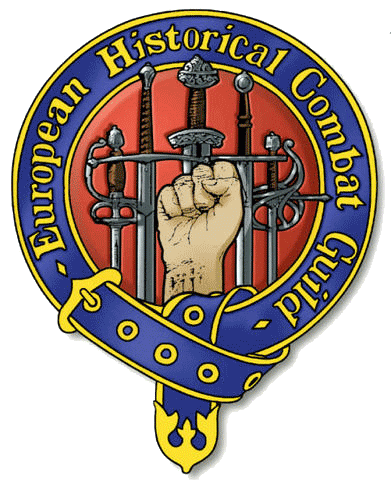THE EUROPEAN HISTORICAL COMBAT GUILD

OBJECTIVES OF THE GUILD
To bring together within the European Historical Combat Guild (hereafter called ‘The Guild’) individuals or groups which share a belief in and practice the philosophies advocated by John Waller whilst learning or teaching European historical combat. Guild membership will give individuals or groups the opportunity to train within a common structure and the chance to exchange ideas and benefit from the expertise offered by the Guild’s teachers. To stimulate the exchange of knowledge and discussion between academics and the practitioners of the physical skills associated with European historical combat, in order to facilitate an overall improvement in the understanding of our subject.
PHILOSOPHY
The philosophy, teaching and beliefs of the Guild are those advocated by John Waller. These have been used successfully for 40 years in the practice and teaching of European Historical combat. It is believed that there are certain factors that can be held to determine the way in which a combat takes place. They are:
* Body mechanics
* The weapons being used
* The clothing/protection worn by the combatants
* The environment in which the combat takes place
* The intention of the combatants
John Waller’s system is based on certain principles of body mechanics, many of which are borne out by the old European manuals as well as being shared by other martial arts around the world. Each fighter/student shall be assessed on an individual basis, allowing for height, size and speed, and the techniques taught should suit their particular physicality. All weapons training should encourage students to become aware of their body’s responses when carrying out various physical actions of attack and defence, and how these responses can be controlled. This awareness can be experienced from the beginning of training, if all offensive or defensive actions are made using eye contact, balance and intent.
THE PRINCIPLES
At the core of the Guilds teaching, are the principles. The principles should apply to every situation. The Guild members believe these govern movement in general and combat specifically. Some will be self evident others will become apparent through practice and repetition. An understanding of these principles should allow the combatant to create his or her particular solution to any problem or combat situation.
BODY MECHANICS
The design of the human body will dictate the ways in which it is able to move most easily. The position of the body at any particular time will determine the way in which the weapon is used. The correct application of the principles should ensure that the combatant would be able to exploit the best possible options offered by body mechanics.
EYE CONTACT
This means that the combatant’s eyes are focused on those of their opponent from the beginning to the end of the fight, simultaneously making use of their peripheral vision to take in the greatest range of visual information from the surrounding area.
BALANCE
Once we make eye contact our main principle, then balance is held to be vital, for without it all other principles cannot be applied. Whether attacking or defending balance is imperative if the student is to keep control of their body and their weapon.
INTENTION
The intention is the level of power behind each strike, which dictates its intended depth of penetration. Also the corresponding level of energy used in defence. The level of intention should be modified during training in the interests of safety.
CONTROL
Closely associated with intention and based on the application of good balance, this is the ability to ensure that movement is executed in a way that allows the practitioner to achieve the desired result, with safety in training and the required power in reality.
ECONOMY OF EFFORT
To make all movements only with the energy that will achieve the desired result.
MOVEMENT
The ability to move offensively or defensively is vital and is dependent on correct centred balance.
TIMING, RHYTHM & SPEED
Are all based on the application of all of the principals though balance is vital.
DISTANCE
At the beginning of a combat, distance will vary depending on the type of weapon used. Distance is a determining factor as to the types of attack and defence that can be made.
WEAPON DESIGN
To make the correct use of the weapon’s design in the most advantageous way in any given situation whether in attack or defence. All parts of a weapon can be used in attack or defence.
If you would like to join or see more info about the EHCG then click here for their website or alternatively you can visit their forum by clicking here

